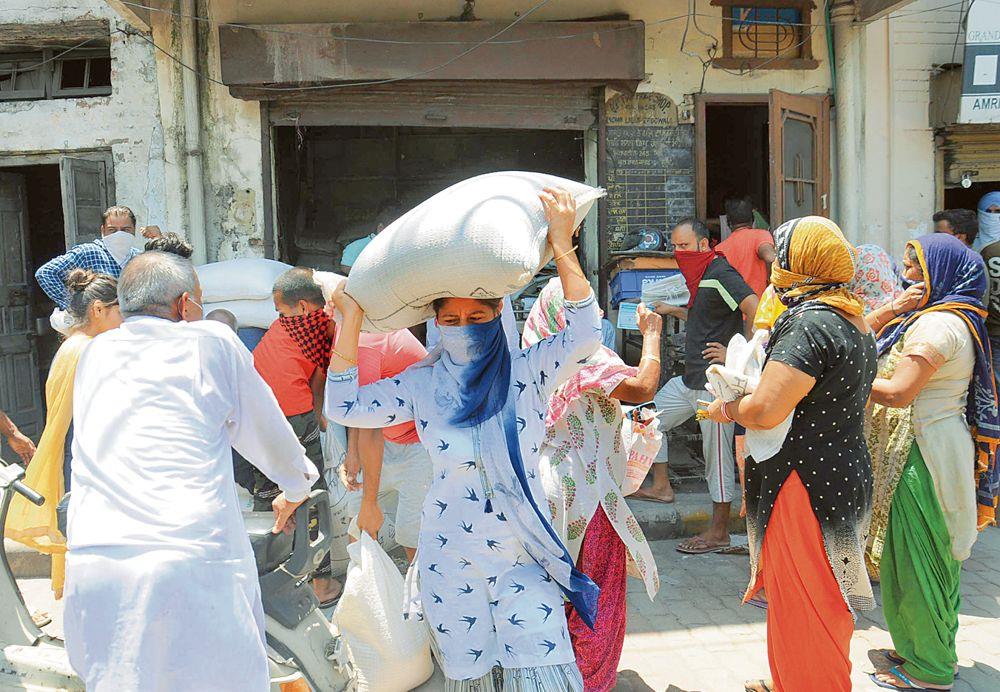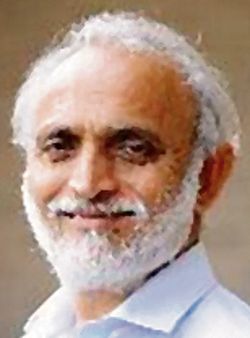
Self-sufficient: Distribution of free foodgrains took place without hiccups. File photo
Parsa Venkateshwar Rao Jr
Senior Journalist
It is reasonable to ask the government what it has done for the people in the pandemic years of 2020 and 2021. The Modi government has time and again trumpeted what it has done for the people, from free foodgrains to 80 crore people to free vaccine to 90 crore and more adult population so far. The money spent on these schemes does not seem to add up to any large figure. It looks quite modest in terms of the total GDP. It means that the government did not have to strain itself to meet the contingencies of the pandemic. It means that India is now able to manage its internal emergencies from its own pocket.
According to an International Monetary Fund (IMF) capsule about how governments of various countries have responded to Covid-19, the figures quoted for India are revealing. It seems that the government has spent as of June 2021, 3.5 per cent of the GDP for what is called ‘above-the-line’ or direct spending, of which 2.2 per cent was spent in 2020. What was spent in kind — foodgrains in the form of free ration and cooking gas — is 1.2 per cent of the GDP. Cash transfers account for another 1.2 per cent of the GDP. Wage support and provision to low-wage labourers, the IMF note says, is 0.5 per cent of the GDP, and insurance coverage for health sector workers and healthcare infrastructure amounts to 0.1 per cent. Fertiliser subsidy is 0.3 per cent and support for urban housing construction 0.1 per cent. The Production Linked Incentive (PLI), which was announced with much flourish, is 0.8 per cent of the GDP spread over five years. Unsurprisingly, support for businesses is 5.3 per cent of the GDP.
Translated into actual figures, all these turn into a few thousand lakhs of crores. And the Press Information Bureau (PIB) releases always mention the lakhs of crores spent on the measures separately. For example, the food subsidy from May 2020 to March 2022 under the Pradhan Mantri Garib Kalyan Ann Yojana (PMGKAY) is Rs 2.60 lakh crore. The subsidy for Phase V from December 2021 to March 2022 is Rs 53,344.5 crore, involving the distribution of 163 lakh metric tonnes of foodgrains.
Despite doling out free foodgrains to 80 crore people under the National Food Security Act (NFSA), the Food Corporation of India (FCI) has been able to offload 71.4 lakh tonnes of foodgrains in the open market this financial year compared to 20.7 lakh tonnes in 2020-21. The good news is that India has attained more than self-sufficiency in the production of foodgrains, so that it is able to give it free to 80 crore and also sell quite a bit of it in the open market. The government did not have to import foodgrains, nor did it feel the pinch in distributing the foodgrains. The question to be asked is whether the ration doled out is sufficient for a month to feed an average Indian family of four or five individuals, children and adults, and whether they can buy the shortfall from the market. And whether coarse grains given free meet the nutrition needs of the people to whom it is given.
It is also the case that the money spent under PMGKAY is only a part of the Central food subsidy, which includes the procurement of foodgrains from the farmers. The general Central food subsidy for the year ending March 2022 stands at Rs 3.72 lakh crore, which is less than Rs 5.29 lakh crore in 2020-21. It was explained by an FCI official that food subsidy outgo was higher last year because of the FCI’s borrowings from National Small Savings Fund.
The reason for quoting the figures is to show that India is now equipped to handle a crisis and that the government’s back is not really broken in doing so. This does not, however, mean that the economy is robust. The growth in the agriculture sector has been impressive and it is for this reason that the government took the risk of weaning them away from depending on it and exposing the farmers to the risks of the market. Of course, the farmers refused to bite the bait and the government had to step back and repeal the so-called farm reform laws.
There can always be a debate on whether more could have been spent on the measures to counter the impact of Covid-19 in economic and social terms, and that too without taking credit away from the government for what it has done. Looking at the figures, it seems to be a modest effort. And if they had spent more, the economy would have been more active than it is now. One of the things was to enlarge the cash transfers instead of distributing foodgrains because then the people would have spent and that would have helped the economy. It looks like the individuals who received the cash dole in the United States managed to turn the corner because they paid off part of their loans and even increased their savings. It needed daring and imagination to do that kind of thing. And perhaps the government can think of some such thing in the future, and it will not be necessary that these things should be done only in the face of a pandemic.
What the figures cited above suggest is that the Indian economy is large and its subsidy burden on essentials is not a large part of the bill. It is possible to rejig an economy through cash transfers to the people who will spend it. There is the credit off-take path too, where businesses are expected to create jobs. Until they do it, the people will have something to spend, and that might increase the GST collection. India is a country of a billion transactions.
Join Whatsapp Channel of The Tribune for latest updates.




























